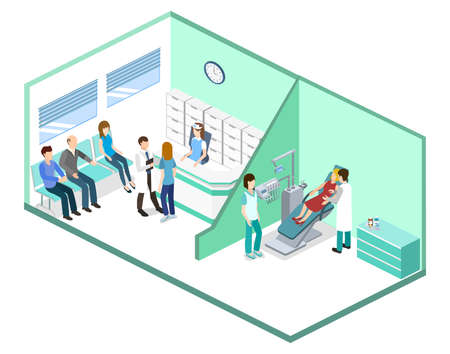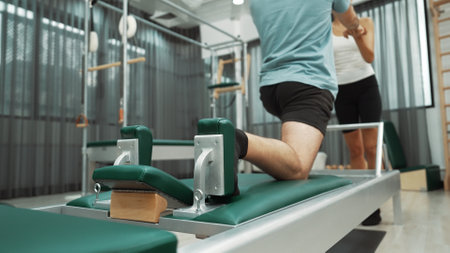Introduction to Emerging Technologies in Neurological Rehabilitation
Across Britain, the field of neurological rehabilitation stands at an exciting crossroads, fuelled by rapid advancements in emerging technologies. This domain, crucial for individuals recovering from strokes, traumatic brain injuries, multiple sclerosis, Parkinson’s disease, and other neurological conditions, has seen transformative changes in both clinical settings and community care environments. Traditionally reliant on hands-on therapies and standardised treatment protocols, rehabilitation is now being revolutionised through the integration of digital tools, robotics, wearable devices, and artificial intelligence. These innovations not only enhance the precision and effectiveness of interventions but also empower patients and clinicians alike with new ways to monitor progress, personalise treatment plans, and facilitate recovery beyond hospital walls. The growing adoption of these technologies throughout the UK reflects a broader recognition of their potential to improve quality of life for patients while easing pressures on healthcare providers. As we explore this landscape further, it becomes evident that embracing such advancements is essential for delivering responsive and equitable neurological care across Britain.
Robotics and Assistive Devices on the NHS
The integration of robotics and innovative assistive devices within British neurological rehabilitation is transforming the landscape of care across NHS hospitals and clinics. The practical adoption of such technologies is not only enhancing patient outcomes but also reshaping clinical workflows, making advanced therapies more accessible to individuals recovering from strokes, spinal injuries, or neurodegenerative conditions.
Real-World Implementation Across British Clinical Settings
Across Britain, numerous NHS Trusts have piloted and now routinely use robotic rehabilitation systems such as the Lokomat gait trainer and the Armeo Spring for upper limb recovery. These devices enable patients to engage in repetitive, task-specific movements under precise guidance, supporting neuroplasticity and functional gains that traditional therapy alone may struggle to achieve. For instance, Guy’s and St Thomas’ NHS Foundation Trust in London has adopted robotic exoskeletons for both inpatient and outpatient rehabilitation, with documented improvements in walking ability and confidence among users.
Selected Examples of Robotics and Assistive Devices in Use
| Device/Technology | Clinical Setting | Reported Benefits |
|---|---|---|
| Lokomat Pro (Hocoma) | Queen Elizabeth University Hospital, Glasgow | Improved lower limb coordination and endurance in stroke survivors |
| Armeo Spring | Addenbrookes Hospital, Cambridge | Enhanced upper limb function post-brain injury through intensive repetition |
| EksoNR Exoskeleton | Royal National Orthopaedic Hospital, Stanmore | Facilitated early mobilisation after spinal cord injury; increased patient engagement |
| Bioness L300 Go Foot Drop System | NHS clinics nationwide | Improved walking speed and safety for people with foot drop due to MS or stroke |
Key Challenges and Cultural Considerations
While these technologies are increasingly available on the NHS, their effective adoption relies on clinician training, ongoing maintenance, and patient willingness to engage with novel interventions. There is a distinct British emphasis on evidence-based practice; thus, integration is typically supported by robust clinical trials conducted in local contexts. Furthermore, the collaborative ethos within multidisciplinary teams ensures that robotics complement—rather than replace—hands-on physiotherapy and occupational therapy sessions.

3. Virtual Reality and Gamification in Therapy
The adoption of virtual reality (VR) and gamified therapy tools is steadily transforming neurological rehabilitation across Britain. In recent years, a number of NHS trusts and private clinics have begun integrating VR-based solutions into their therapy programmes, recognising the potential these technologies hold for enhancing patient engagement. British rehab centres are increasingly leveraging immersive environments to motivate patients, particularly those recovering from stroke or traumatic brain injury, by creating interactive exercises that mimic real-world challenges in a controlled and safe manner.
Gamification, where therapeutic activities are structured as games, further bolsters this approach by providing immediate feedback, setting achievable goals, and fostering a sense of accomplishment. Patients often report higher motivation when engaging with gamified tasks compared to traditional repetitive exercises. This increased participation is especially valuable for younger patients or those who may struggle with conventional therapy routines. Several UK-based studies now indicate measurable improvements in adherence rates and functional outcomes when VR and gamification are employed alongside standard care.
Despite these promising developments, practical considerations remain. Clinicians across the UK are actively discussing how best to integrate these tools within existing frameworks without overwhelming staff or resources. Training requirements, equipment costs, and the need for evidence-based protocols are all factors influencing adoption rates. Nonetheless, early feedback from both therapists and patients at British neurological rehab centres suggests that VR and gamified therapies can complement hands-on approaches—making sessions more enjoyable while supporting measurable progress in recovery.
4. Tele-rehabilitation and Digital Health Platforms
The integration of tele-rehabilitation and digital health platforms is rapidly transforming neurological rehabilitation services across Britain. As urban centres and rural communities alike face unique challenges in accessing specialist care, these technologies are bridging longstanding gaps, allowing patients to benefit from consistent, high-quality support regardless of location.
Improving Accessibility for Urban and Rural Populations
Traditional models of neurological rehabilitation often necessitate frequent visits to specialist clinics, which can be particularly burdensome for those living in remote or underserved areas. Tele-rehabilitation leverages secure video conferencing, wearable sensors, and interactive apps to deliver therapy directly into patients’ homes. This not only reduces travel time but also minimises associated costs and logistical barriers.
Continuity of Care: Key Benefits
| Benefit | Urban Areas | Rural Areas |
|---|---|---|
| Reduced Travel Burden | Less disruption to work/family schedules | Eliminates long-distance journeys |
| Access to Specialists | Easier scheduling outside normal hours | Connects with national experts remotely |
| Personalised Monitoring | Frequent virtual check-ins enhance care | Remote monitoring mitigates isolation risks |
| Resource Efficiency | Optimises clinic capacity for severe cases | Maximises reach in low-resource settings |
Case Example: NHS Initiatives in Digital Health Delivery
The NHS has been proactive in piloting tele-rehabilitation programmes, particularly through the use of platforms such as Attend Anywhere and myRehab. Early data indicate improved patient engagement and better adherence to therapy plans, especially among stroke survivors and individuals with progressive neurological conditions. By enabling therapists to tailor interventions via real-time feedback and outcome tracking, these platforms promote a more responsive model of care delivery.
Cultural Acceptance and Future Considerations
Uptake across Britain has varied, with greater enthusiasm observed in areas already familiar with digital public services. However, ongoing investment in broadband infrastructure and targeted digital literacy campaigns are crucial to ensure that all communities—whether in the Scottish Highlands or inner-city London—benefit equally from these emerging solutions. In summary, tele-rehabilitation and digital health platforms are not merely technical innovations but vital tools for reducing health disparities and enhancing the continuity of neurological care throughout Britain.
5. Artificial Intelligence and Data-Driven Approaches
The integration of artificial intelligence (AI) and data-driven methodologies is markedly transforming neurological rehabilitation across Britain. AI’s potential lies in its ability to analyse vast quantities of clinical and behavioural data, supporting clinicians in devising more personalised and effective treatment plans for patients recovering from conditions such as stroke, traumatic brain injury, or multiple sclerosis. Increasingly, British hospitals and rehabilitation centres are piloting AI-powered systems capable of monitoring patient progress in real time, identifying subtle patterns that may be missed by the human eye. By leveraging machine learning algorithms trained on anonymised NHS datasets, practitioners can predict likely outcomes and tailor therapies accordingly, ensuring resources are optimally directed towards those who stand to benefit most.
Personalised Treatment through Predictive Analytics
One key advantage of adopting AI in the UK’s neurological rehabilitation landscape is the move towards bespoke care pathways. Machine learning models can assimilate variables such as age, severity of impairment, comorbidities, and even social factors unique to British communities—like access to local support services or family involvement. These models then suggest interventions with the highest probability of success for each individual. The result is a far more nuanced approach than traditional protocols, empowering patients to achieve their recovery goals more efficiently while also respecting NHS resource constraints.
Early Detection and Outcome Forecasting
Another significant development is the use of predictive analytics to forecast rehabilitation trajectories. By analysing historical patient records alongside real-time sensor data from wearables or home-based devices, AI platforms deployed in British clinics can flag early signs of stagnation or regression. This enables therapists to intervene promptly, modifying exercise regimens or providing targeted motivation where necessary—potentially reducing long-term disability rates and improving quality of life for patients nationwide.
Ethical Considerations and UK Regulatory Framework
While AI offers immense promise, its adoption must align with strict ethical standards and regulatory guidelines established in the UK. Patient privacy remains paramount; all data utilisation must comply with GDPR regulations and NHS digital governance frameworks. Furthermore, there is an ongoing need for transparency: British clinicians and technologists collaborate closely to ensure that AI recommendations remain explainable and trustworthy, fostering both patient confidence and professional accountability as these emerging technologies become routine in neurological rehabilitation settings.
6. Challenges and Opportunities Unique to Britain
The integration of emerging technologies into neurological rehabilitation across Britain is not without its unique set of challenges and opportunities. While the potential for transformative change is evident, several barriers must be addressed to fully realise these benefits within the UK context.
Barriers to Implementation
One major obstacle is the disparity in digital infrastructure across regions. Urban centres may enjoy faster adoption due to robust connectivity and greater funding, whereas rural or underserved areas risk being left behind. Additionally, the NHS, while providing a unified healthcare system, faces bureaucratic complexities and budgetary constraints that can slow down the procurement and deployment of novel solutions. The training of clinicians and therapists to confidently use new technologies presents another hurdle; time and resources must be allocated for continuous professional development, which is often in short supply.
Opportunities for Innovation
Despite these barriers, Britain’s strong academic research base and thriving health-tech start-up ecosystem provide fertile ground for innovation. Collaboration between universities, NHS trusts, and private enterprises is fostering homegrown solutions tailored to British patients’ needs. Furthermore, government initiatives such as the NHS Long Term Plan place a clear emphasis on digital transformation, creating a supportive policy environment for piloting and scaling up promising technologies. The UK’s commitment to evidence-based practice also ensures rigorous evaluation—an advantage in building trust among clinicians and service users alike.
Equitable Access Considerations
Ensuring equitable access remains a critical concern. Socioeconomic disparities can affect who benefits from technological advancements; for instance, those lacking digital literacy or personal devices may struggle with remote rehabilitation tools. Policymakers and providers must consider inclusive design principles and offer supplementary support—such as community-based digital hubs or loan schemes—to bridge the digital divide. Moreover, engaging patients and carers in co-design processes helps tailor interventions that are accessible and acceptable to diverse communities across England, Scotland, Wales, and Northern Ireland.
Looking Forward
Britain stands at a pivotal juncture: by addressing implementation barriers head-on while seizing opportunities for locally relevant innovation, the nation can ensure that emerging technologies enhance neurological rehabilitation equitably from Land’s End to John o’ Groats.
7. Outlook and Future Directions
The future trajectory of neurological rehabilitation technologies across Britain appears both promising and transformative. As innovative tools such as AI-driven assessment platforms, virtual reality-based therapies, wearable robotics, and tele-rehabilitation services continue to mature, their integration into mainstream healthcare is set to redefine the landscape of patient care. The ongoing collaboration between NHS trusts, universities, and technology providers forms a solid foundation for accelerating research translation into practical clinical solutions.
Looking ahead, the increased personalisation of rehabilitation programmes—powered by data analytics and machine learning—holds the potential to deliver more targeted interventions. This could significantly improve outcomes for patients recovering from stroke, traumatic brain injury, or progressive neurological conditions. Moreover, remote monitoring and digital health platforms are likely to become even more prevalent, making specialist support accessible to individuals in rural or underserved communities across Britain.
However, these advancements also bring new challenges for the healthcare system. Ensuring equitable access to cutting-edge rehabilitation technologies will require sustained investment in digital infrastructure and comprehensive staff training. Furthermore, clear regulatory frameworks must be established to guarantee patient safety and data privacy as innovation accelerates.
In reflection, Britain’s commitment to harnessing emerging technologies in neurological rehabilitation could set a benchmark for global best practice. The coming years will demand close collaboration among clinicians, engineers, patients, and policymakers to ensure that technological progress translates into tangible benefits for all. With careful stewardship, these advances promise not only to enhance individual recovery journeys but also to shape a more resilient and responsive healthcare system nationwide.


